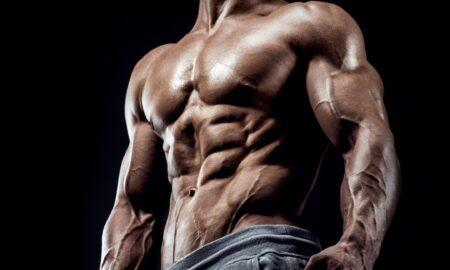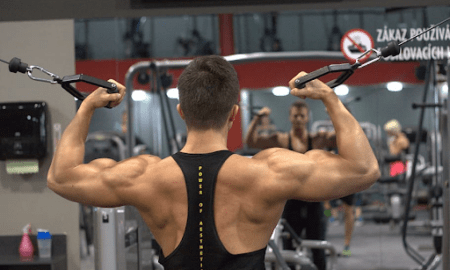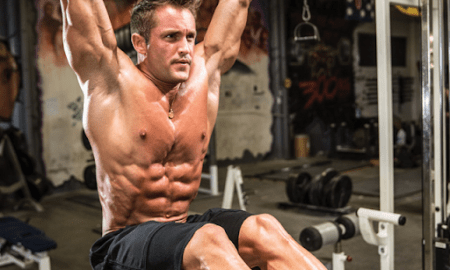Q: I’m 45 years old and have never been able to see my abdominal muscles. Could I have a problem? Was I born without abs?
A: First, everyone is born with abdominal muscles. You wouldn’t be able to stand if they weren’t there. They are there—probably beneath a layer of fat.
There’s a phrase you hear in the fitness industry right now, “developing the core.” While developing your “core” is a good idea, you wouldn’t be able to walk if your abs were all that weak. There’s no more importance in working the abdominal area than any other area. The fact is, you work your abs a lot when you’re not even thinking about them. For example, you work your abs merely by walking; they hold your spine in place and flex when you do heavy triceps pushdowns or pullovers. Anyone who can walk has abs that are quite well developed.
The same can be said of the spinal erector muscles, which are the opposing muscles to your lower abs. They hold your body upright.
There is no need to work your abs for hundreds of reps—or, for that matter, on a special device or for days on end. Two simple exercises done a couple of days a week are all you need—plus a diet adjustment.
I believe that everyone should do some type of leg raise. Hang from a pullup bar or lie on the floor. Do a few sets to failure twice a week, and include some type of crunch work as well.
I start with leg raises. I lie on my back on the floor, put my hands behind my head and, with legs straight, raise them about two feet off the floor. Once I get to the point where my lower abs are no longer working to raise my legs, I lower my feet to about an inch from the floor, and then back up they go. I do leg raises until I can do no more. Then I bend my knees, cross my legs at the ankles and from the same position do simple crunches by bringing my elbows up to my legs, hands still behind my head. I do those until failure, rest 30 seconds and then do the cycle again. I do that ab routine twice in an eight-day workout schedule, and that’s all. I’m now 52, and all it would take is about a month of dieting to get my abs looking contest ready.
What I believe you’re missing more than anything is the proper diet to help bring your abs rippling out to the surface. Here’s what you need to be eating: one to 1 1/2 grams of lean protein per pound of bodyweight a day, divided into four meals. Then, multiply 1.25 times your protein intake, and that should be your grams of carbohydrates, eaten in the form of vegetables and small amounts of fruit. If you want to see those abs, you can’t use anything refined. Fats should be minimal and should come only from nuts such as almonds or macadamias, a bit of avocado, tiny amounts of olive oil—and eight to 12 molecularly distilled fish oil capsules a day.
When I train to bring out my abs, I don’t cook with any oil. I eat a handful of nuts with each meal and rely on them and the fish oils to help build testosterone and growth hormone most effectively. That’s the way to see your abs at midlife.
Editor’s note: To contact Paul Burke, write to [email protected]. Burke has a master’s degree in integrated studies from Cambridge College in Cambridge, Massachusetts. He’s been a champion bodybuilder and arm wrestler, and he’s considered a leader in the field of over-40 fitness training. You can purchase his book, Burke’s Law—a New Fitness Paradigm for the Mature Male, from Home Gym Warehouse. Call (800) 447-0008, or visit www.Home-Gym.com. His “Burke’s Law” training DVD is also now available. IM




















You must be logged in to post a comment Login